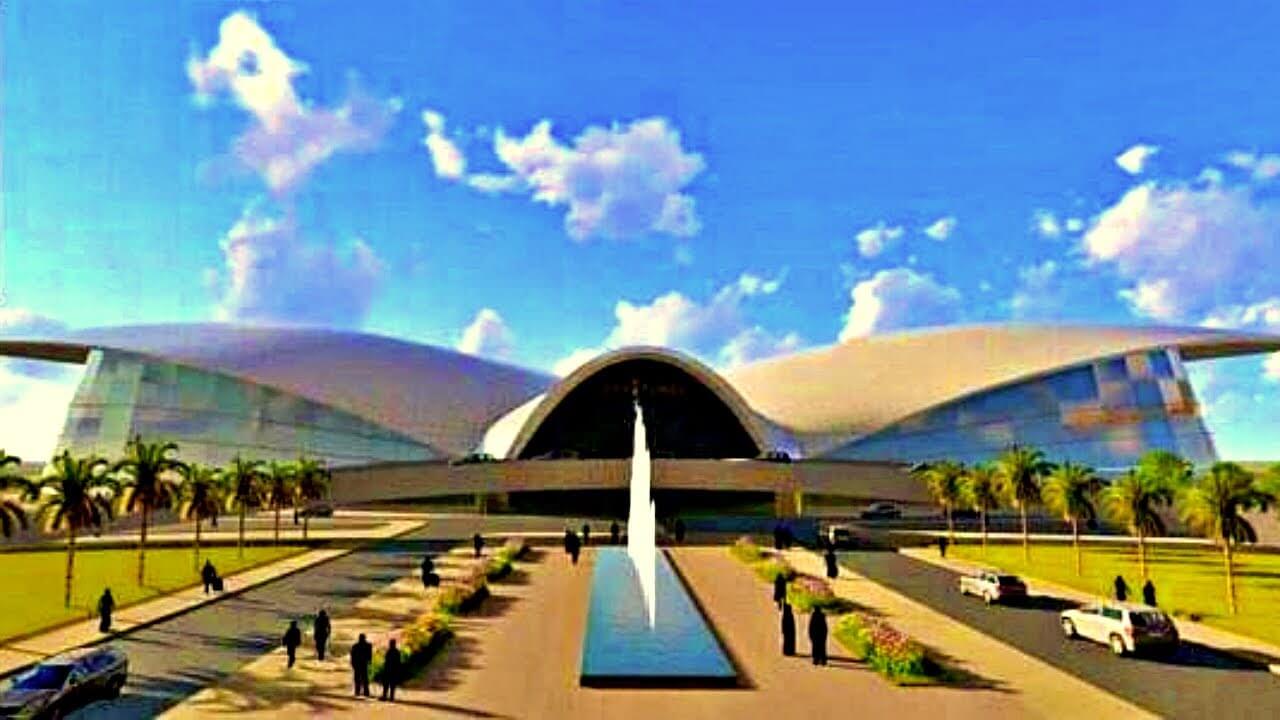Sierra Leone has officially opened its new $270 million passenger terminal at Freetown International Airport in Lungi, some 12 km north of Freetown.
The 14,000 square metre terminal can accommodate up to 1 million passengers a year, up from its current 227,000 passengers. It is three times the size of the airport’s existing facility, situated on the southern side of the new runway.
Other new features include; a presidential and VIP terminal; an air traffic control tower with ultramodern equipment, ICT infrastructure, and radiotelephony; an apron area that accommodates at least eight large aircraft; and a firefighting facility.
A 1.5-megawatt solar farm powering all its needs makes it the first fully green terminal facility in West Africa.
Speaking at the ceremony, President Julius Maada Bio said the airport had “been built with zero cents in debt.”
Turkish construction company, Summa, built the new terminal under a ‘build, operate, and transfer’ contract, which will see it operate the airport for 25 years before handing it over to the Sierra Leone government.
This is the first international terminal to be built in Sierra Leone since it gained independence in 1961 and is Summa Group’s largest single infrastructural accomplishment in Africa.
President Bio said the airport is now “safer, modern, and very comfortable.”
“I am therefore very proud to commission the new Freetown International Airport – a sustainable and modern airport that will generate economic growth and national development,” he concluded.
Africa Young Voices (AYV), a local television, reports that other notable features of the facility include a quay space, cranes, airfield ramp access, temporary storage sheds, customs offices, transport services, and clearing and forwarding services.
Besides facilitating an increase in passenger traffic and, thus, service delivery, the airport’s runway has also been increased from 45 metres to 60 metres to host more aircraft.
On each side, the runway will be 3.2 kilometres long and 45 metres wide, with 25% of the runway space used by taxi services to ease to and from airport logistics. With this runway, four flights can take off simultaneously.
The official operationalisation of the terminal comes a few weeks after the Sierra Leone parliament ratified eight bilateral service agreements.
The government agreed to international commercial air transport services between Sierra Leone, Tanzania, the Czech Republic, Mozambique, Kenya, Niger, and Iceland.
With these new developments, Sierra Leone will potentially see a surge in carriers, tourists, and businesses.
The air transport industry in Africa is on the resurgence, with aviation being Africa’s next infrastructure growth frontier.
The continent is seeing a surge in tourist numbers, recovering about 65% of its pre-pandemic tourist numbers with its carriers resuming international operations.
In the cargo space, more international air cargo airlines, including Chapman Freeborn, the global air charter specialist, are entering and expanding their operations across the continent to capitalise on the sector’s boom.
Seventeen African nations are also testing the African Union Single African Air Transport Market between their territories, fully opening their skies to each other as part of the pilot –to create a unified African air transport market.
bird story agency
Sierra Leone has inaugurated a new $270 million, 14,000 square-meter terminal at Freetown International Airport in Lungi, expanding its capacity to accommodate 1 million passengers annually, compared to the previous 227,000. The terminal includes modern features such as a presidential and VIP terminal, an ultramodern air traffic control tower, a large apron area, and a fully green, 1.5-megawatt solar farm.
President Julius Maada Bio highlighted that the terminal was built debt-free by Turkish company Summa under a 'build, operate, and transfer' contract, which allows Summa to manage the airport for 25 years. This marks Sierra Leone’s first international terminal since independence in 1961 and is a significant accomplishment for Summa Group in Africa.
The airport has also enhanced its runway to 60 meters to facilitate more aircraft, with spaces for cranes, transport services, and customs offices, enabling improved passenger and cargo services. The recent parliamentary ratification of eight bilateral air service agreements is expected to boost tourism and business.
The development reflects Africa's growing air transport industry, with many nations participating in the African Union Single African Air Transport Market to unify air services across the continent, signaling an infrastructural growth frontier in aviation. Additionally, more international air cargo airlines are expanding in Africa to capitalize on the booming sector.






